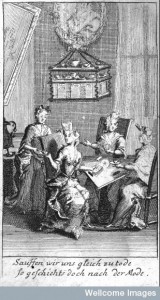 In 1685 a printed treatise declared that:
In 1685 a printed treatise declared that:
‘amongst all the Drugs whereof Heaven has shewed it self liberal to Men, there be three chiefly which in our time have required so great a vogue or credit, and so particular an esteem through all Europe by the signal effects which they are daily found to produce in an infinite number of People’.1 The drugs the author was describing are familiar still; tea, coffee and chocolate (hot chocolate). The spread of these drinks during the seventeenth century was accompanied by a medical discussion about the benefits they could have.
Indeed the author of this tract went on to extol the virtues of tea noting that ‘`tis the common vogue and opinion of this Country, that there is nothing more Soveraign then this plant’.2 According the treatise tea was believed to prolong life into old age, render the body vigorous, cure pains of the head, rheums, and soreness of the eyes, shortness of breath , weakness of the stomach and griping of the guts.3 (Reading this list I feel totally vindicated in my love of a good cuppa)
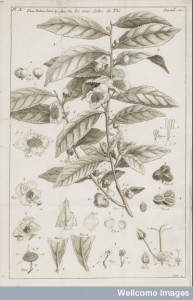 The same tract also stated that coffee could be beneficial to health, it was thought to be good for cold swellings of the liver and spleen, the author also claimed that Parisian coffee shops sold coffee with the commendation that it dried up cold and moist humours, fortified the liver, eased the dropsy and was a sovereign medicine against corruption of the blood and helped the shortness of breath.4
The same tract also stated that coffee could be beneficial to health, it was thought to be good for cold swellings of the liver and spleen, the author also claimed that Parisian coffee shops sold coffee with the commendation that it dried up cold and moist humours, fortified the liver, eased the dropsy and was a sovereign medicine against corruption of the blood and helped the shortness of breath.4
So it would seem that there was little between tea and coffee, both were medicinally beneficial. Yet coffee’s reputation in the popular literature of early modern England was not so straightforward. Coffee in a certain group of satirical pamphlets became highly controversial as ‘women’ (although it was probably written by men) claimed that coffee as a heating a drying drink was making men impotent.
The Women’s Petition Against Coffee (1674) decried that the country’s men who were previously the ‘Ablest Performers‘ of venereal pursuits were now ‘meer Cock-sparrows fluttering things’ ‘not capable of performing those Devoirs which their Duty, and our Expectation Exact’.5 The author of this pamphlet knew exactly what was to blame for this disappointment, it was
‘the Excessive use of that Newfangled, Abominable, Heathenish Liquor called COFFEE, which Riffling Nature of her Choicest Treasures, and Drying up the Radical Moisture, has so Eunuch: our Husbands, and Crippled our more kind Gallants, that they are become as Impotent, as Age, and as unfruitful as those Desarts whence that unhappy Berry is said to be brought.’6
 This was damning condemnation indeed, but the coffee drinkers this pamphlet supposedly addressed fought back. In the same year The Mens Answer to the Womens Petition Against Coffee Vindicating Their own Performances was published to answer the undeserved aspersions cast by that scandalous pamphlet. In reality these pamphlets were probably written and produced by the same author. This new pamphlet not only asserted that English men were certainly not fluttering sparrows unable to satisfy their women, but claimed that women were too lusty and expected too much from their men.7 The writer of the pamphlet asked, ‘why must innocent COFFEE be the object of your Spleen? That harmless and healing Liquor’ when it was evident than rather than causing impotence it was in fact beneficial to men’s sexual abilities; it was an aphrodisiac that improved all elements of men’s sexual and reproductive abilities,
This was damning condemnation indeed, but the coffee drinkers this pamphlet supposedly addressed fought back. In the same year The Mens Answer to the Womens Petition Against Coffee Vindicating Their own Performances was published to answer the undeserved aspersions cast by that scandalous pamphlet. In reality these pamphlets were probably written and produced by the same author. This new pamphlet not only asserted that English men were certainly not fluttering sparrows unable to satisfy their women, but claimed that women were too lusty and expected too much from their men.7 The writer of the pamphlet asked, ‘why must innocent COFFEE be the object of your Spleen? That harmless and healing Liquor’ when it was evident than rather than causing impotence it was in fact beneficial to men’s sexual abilities; it was an aphrodisiac that improved all elements of men’s sexual and reproductive abilities,
‘it rather assists us for your Nocturnal Benevolencies, by drying up those Crude Flatulent Humours, which otherwise would make us only Flash in the Pan, without doing that Thundering Execution which your Expectations Exact’.8
He went on to explain that ‘Coffee Collects and settles the Spirits, makes the erection more Vigorous, the Ejaculation more full, adds a spiritualescency to the Sperme, and renders it more firm and suitable to the Gusto of the womb, and proportionate to the ardours and expectation too, of the female Paramour.’9
These satirical and humorous pamphlets were of course speaking to broader cultural concerns than simply the ability of coffee to impede or improve men’s sexual abilities. They tied in to concerns about barrenness and infertility and the belief that a lack of children in a marriage showed social disorder and prevented men and women from fulfilling their expected social roles. They also of course show that in early modern society where new foods and drinks were being brought into the country and regularly consumed there was an interest in the health benefits of these new substances. But most importantly, for me at least, these pamphlets emphasise a key aspect of early modern thinking about the body, and the sexed and sexual body in particular. They shown that men and women at this time perceived their sexual, and reproductive abilities, as inherently vulnerable and sensitive: a man’s ability to engage in intercourse could be debilitated or strengthened simply by a cup of coffee. Food and drink altered the humoural balance of the body in a variety of ways and this could be manipulated to either restrict or enhance the chances of engaging in pleasurable sexual intercourse and conceiving a child.
[I will be discussing this issue in greater detail in my forthcoming book Kindling Cupids Fire: Aphrodisiacs, Society and Culture In Early Modern England]
_______________________________
1. The Manner of Making of COFFEE, TEA and CHOCOLATE … (London, 1685), sig. A3r
2. Ibid, p.49.
3. Ibid, p.49.
4. Ibid, pp. 11-12.
5. Anonymous, The Women’s Petition Against Coffee … (London, 1674), p.1.
6. Ibid, p. 2.
7. Anonymous, The Mens Answer to the Womens Petition Against Coffee, Vindicating Their own Perfomances … (London, 1674), p.1.
8. Ibid, pp. 2-3.
9. Ibid, p. 4.
© Copyright Jennifer Evans all rights reserved.
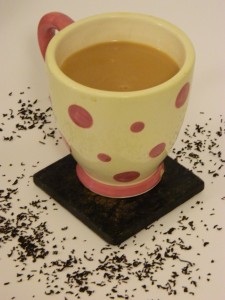
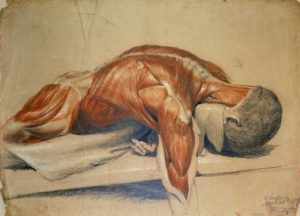
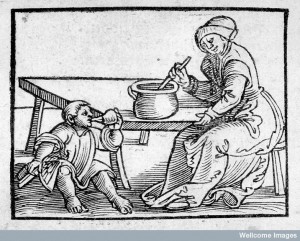
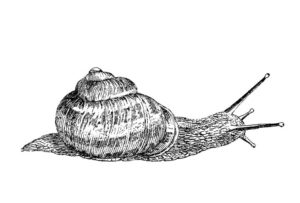
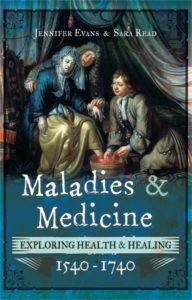
The two humorous squibs, purportedly a quarrel between the sexes, were probably the work of a single author. This was commonplace in such mock debates about sex and gender.
One of the classic works connecting sex and those new drugs, which rapidly became recreational, is Henry Stubbe’s Indian Nectar, produced a decade (or less — the details are confused) after the opening of the first chocolate house. The relationship between chocolate and sexual emissions, more prominently than with any other non-naturals, is striking. However, the passage about “moderate Venery” being “admirably effectual in hot distempers, and madness of the Brain in young unmarried folks” is particularly notorious.
Is this a standard remark of the sort found in discussions of hysteria, or is there really something subversive here? Does “moderate Venery” refer to penetrative intercourse used in moderation or to less intimate embraces?
Hi David,
firstly I’m not sure that I would agree that chocolate was the most famous substance for its connection to sexual provocation. There were many throughout the period that were closely connected to sex, particularly if you look at medical texts and herbals.
I personally haven’t looked extensively at hysteria, so I couldn’t say how common this is in discussions of this disorder. It is a little bit late for my own research. I would be more inclined to think that the brains of young people was connected to disorders caused by a retention of seed so greensickness, or the connections between womb fury and heat (what would come to be called nymphomania in the 18th century)
Moderate venery usually refers to the frequency of sexual acts, rather than non-penetrative sexual activity. The emission of seed was crucial in this because it helped to regulate fluid/humour levels within the body. As seed was also thought to be relatively hot when potent it makes sense that regularly removing some of this would cool hot distempers and relieve the furore of the brain.
I wanted to write about chocolate as well, but didn’t want the blog post to become too long. perhaps there could be a related post looking at Stubbe’s concerns about chocolate. But thanks for raising this for anyone who is interested in the long history of chocolate as an aphrodisiac you should follow this up!
I should add that Chocolate as a drink included numerous spices that were thought to be aphrodisiacs themselves.
I said that Henry Stubbe’s book is “one of the classic works”, not that chocolate was the aphrodisiac most widely touted.
Certainly, there was much concern about preventing impotence, as the opening sections of many midwifery texts demonstrate, to the bemusement of modern historians. Many remedies were suggested, as you know better than I.
Hysteria, greensickness and lovesickness are separate issues, although all are related to a lack of sexual activity. As Helen King has shown, greensickness was a new disease with textual origins, but the other two had long and varied histories. Hysteria is interesting in the present context because it shifts from the womb (Jorden) to the brain (Willis).
My assumption is that “moderate venery” does mean penetrative “heterosexual” sex in moderation, but that seems an odd thing for even Stubbe to recommend publicly as therapy for the unmarried. Given the existence of other forms of sexual activity, I wonder if the linguistic field of “venery” was at times wider than we tend to think.
As for the emission of seed, whether male or female, it was clearly one of the non-natural excretions, along with sweating, coughing, and the voiding of the bowels or bladder. However, it’s not usually as prominent as it is for Stubbe. Is he quietly engaged in religious subversion?
Apologies for my confusion!
I think you are right that early modern understandings of sex encompassed a range of sexual behaviours, and I’m sure that authors and readers could have meant/taken from these discussions that they stimulated men towards a range of behaviours. Medically I think many authors still treated venery as you say as heterosexual penetrative sex. I am put in mind of Ambrose Pare who wrote that husbands would have to use all kinds of allurements to venery on uninterested wives, the suggestions he made included using aphrodisiacs and various forms of foreplay, which would perhaps suggest he saw venery as the final act.
The idea that Stubbes was involved in religious subversion through suggesting the medical use of sex is certainly intriguing and would probably take a great deal of unpacking
It’s not the medicinal function of sex as such that I had in mind, but rather the prescription of it to the unmarried. I write under correction, but surely it was marriage that was prescribed for the diseases of virgins in this period, not fornication.
One gets a very different view of who was in need of encouragement from proceedings before the church courts for the dissolution of a marriage, or before civil courts for separation. Of course, we all know how ravenously lustful mediaeval and early modern women were supposed to be.
Those poor harassed men! Always at the mercy of skmmingtons and alehouse ribaldry!
Indeed, marriage certainly over fornication, which does make him sound rather subversive.